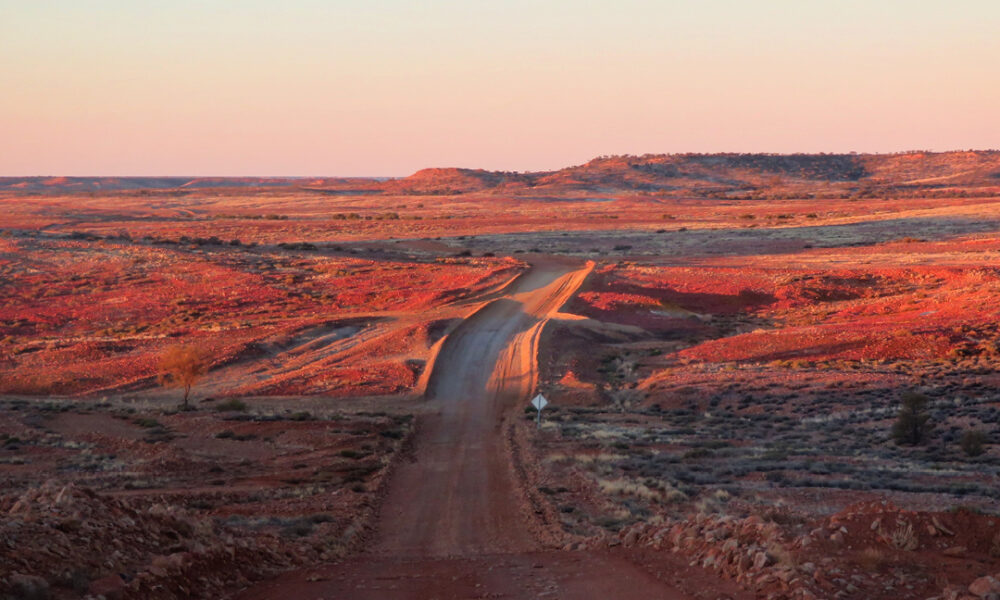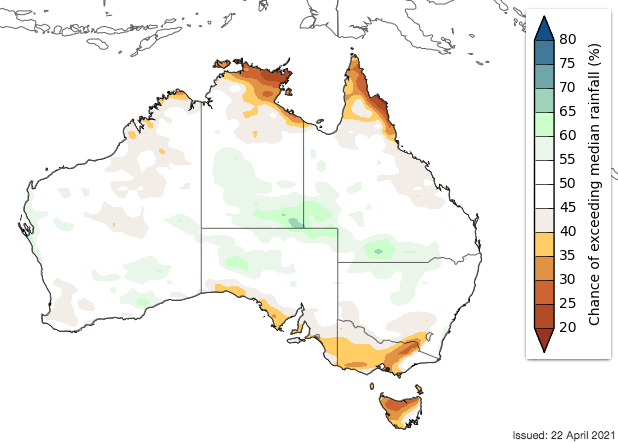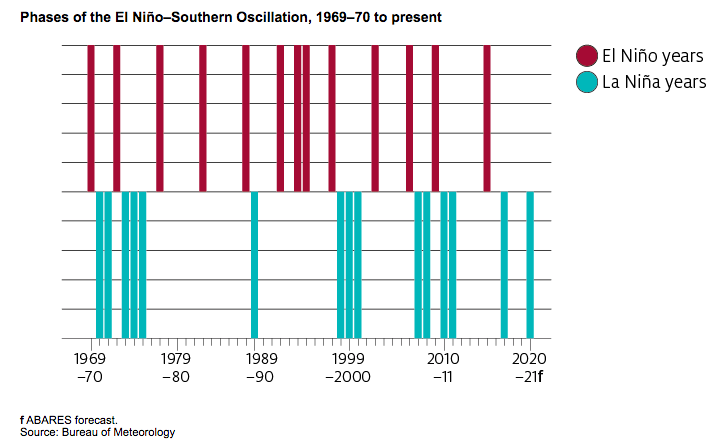La Nina-cation Breakdown

The Snapshot
- Most of the Bureau of Meteorology climate drivers have moved from a La Nina setting to a more neural phase.
- The Madden Julian Oscillation (MJO) is pointing to a drier than normal start to May.
- A recent ABARES climate outlook suggests that there is a high chance of at least one year in the next two to five years reverting to drought conditions.
The Detail
The Bureau of Meteorology (BOM) has signalled that the La Nina event, which has been underpinning the above average wetter season to date along the eastern seaboard, has began to move to a more neutral phase since the start of April.
While most climate drivers are now at a neutral setting, the Madden Julian Oscillation (MJO) is expected to have a drying influence into the early part of May, particularly for parts of northern and south eastern Australia.
Indeed, the BOM three month outlook for rainfall to July 2021 suggests that the chance of exceeding the median rainfall level is less than 40% for the Top End of the NT, Cape York Peninsula in Queensland, southern parts of SA, and most of Victoria and Tasmania.
Back in February the EP3 team produced an analysis piece on the slow herd rebuild, signalling concerns about the potential for a move back into an El Nino dry event by the middle of the decade, according to the analysis undertaken on more than a century worth of rainfall data.
Recently, we were alerted to an insightful climate piece on the ABARES website that lends support to our concern for the chance of a El Nino inspired dry spell by the middle of the decade. The ABARES seasonal climate update outlines that the medium term outlook suggests that there is a high chance of at least one year in the next two to five years reverting to drought conditions.
Indeed, the ABARES rainfall and climate analysis highlights that the likely climate scenarios to the middle of the decade are as follows:
- neutral years – most likely outcome in most years, with 24 out of 52 years since 1969–70
- El Niño – likely to occur at least once, having occurred every 3 to 5 years since 1969–70
- La Niña – least likely, having occurred every 3 to 7 years since 1969–70


